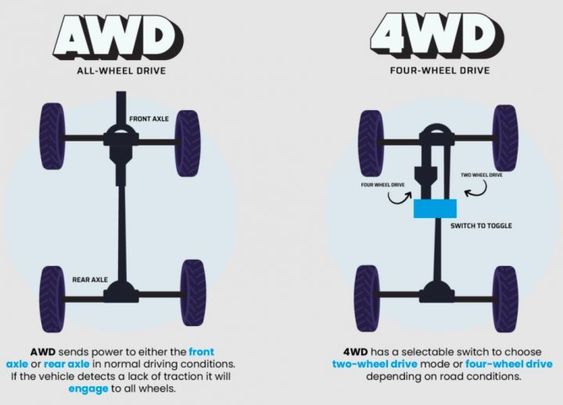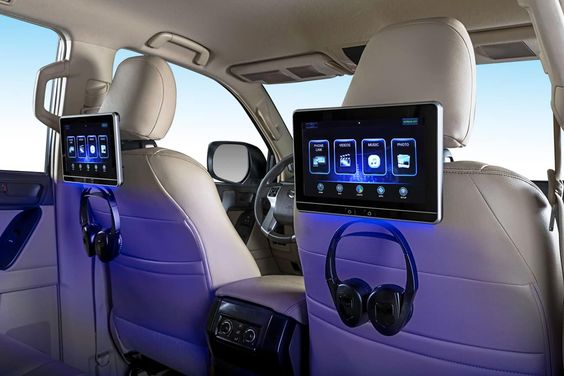Introduction:
When shopping for a new car, you might come across the terms "all-wheel drive" (AWD) and "4-wheel drive" (4WD). These terms are often used interchangeably, but they actually refer to different systems with distinct capabilities. Understanding the differences between AWD and 4WD is crucial for making an informed decision about the type of vehicle that best suits your needs.

AWD and 4WD systems both aim to improve traction and handling, particularly in slippery conditions. However, they achieve this goal through different mechanisms and have varying levels of off-road capability. This article will delve into the technical aspects of each system, highlighting their strengths and weaknesses, and ultimately helping you determine which option is right for you.
All-Wheel Drive (AWD)
AWD systems are designed to distribute power to all four wheels continuously, even when driving on dry pavement. This constant power distribution provides enhanced traction and stability, especially in situations like rain, snow, or icy roads. AWD systems are typically found in passenger cars, SUVs, and crossovers, making them a popular choice for drivers who prioritize year-round performance and safety.
4-Wheel Drive (4WD)
4WD systems, on the other hand, allow drivers to manually engage or disengage the drive to the rear wheels. This means that 4WD vehicles can operate in two modes: 2WD (rear-wheel drive) for optimal fuel efficiency on dry surfaces and 4WD for increased traction and off-road capabilities. 4WD systems are commonly found in trucks, SUVs, and off-road vehicles, where their ability to tackle challenging terrain is highly valued.
AWD vs. 4WD: Key Differences
Here's a breakdown of the key differences between AWD and 4WD systems:
- Engagement: AWD systems engage all four wheels automatically, while 4WD systems require manual engagement.
- Power Distribution: AWD systems typically distribute power proportionally to all four wheels, while 4WD systems can offer different power distribution options, including locking differentials for enhanced off-road performance.
- Off-Road Capability: 4WD systems generally offer superior off-road capabilities due to their higher ground clearance, lower gear ratios, and locking differentials.
- Fuel Efficiency: AWD systems tend to be less fuel-efficient than 2WD systems due to the constant power distribution to all four wheels.
Choosing the Right System
The choice between AWD and 4WD ultimately depends on your individual needs and driving habits. If you prioritize year-round traction and stability on paved roads, AWD is a great option. However, if you frequently encounter challenging off-road conditions, 4WD offers superior capabilities.
Consider the following factors when making your decision:
- Driving Environment: Do you live in an area with frequent snow or rain?
- Off-Road Use: Do you plan on taking your vehicle off-road?
- Fuel Efficiency: Are you concerned about fuel economy?
By carefully considering these factors, you can choose the drive system that best aligns with your driving needs and preferences.





